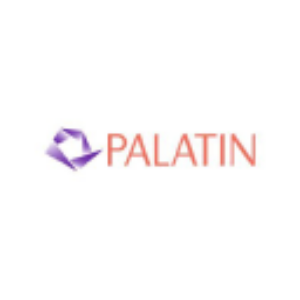Palatin Announces Positive Phase IIb BREAKOUT Study Results in Patients with Type 2 Diabetic Nephropathy
Rhea-AI Summary
Palatin Technologies (NYSE: PTN) announced positive topline data from its Phase IIb BREAKOUT study evaluating bremelanotide in patients with Type 2 diabetic nephropathy. The study, which enrolled 16 patients with 8 completing the six-month treatment, demonstrated significant efficacy:
- 71% of patients achieved >30% reduction in urine protein to creatinine ratio
- 71% achieved improved or stabilized estimated glomerular filtration rate
- 37.5% showed increased urinary VEGF levels
- 36% demonstrated reduced urinary synaptopodin losses
The treatment was well-tolerated with no serious adverse events, though skin hyperpigmentation occurred in 71% of patients. The study validates melanocortin system modulation as a potential new therapeutic strategy for this progressive kidney disease.
Positive
- 71% of patients achieved >30% reduction in urine protein to creatinine ratio
- 71% of patients showed improved or stabilized kidney function (eGFR)
- No serious adverse events reported
- Study validates melanocortin system modulation as potential treatment
Negative
- Small patient sample size with only 8 completing the full treatment
- Skin hyperpigmentation side effect in 71% of patients
- 50% patient dropout rate (8 out of 16 enrolled completed)
News Market Reaction 1 Alert
On the day this news was published, PTN gained 14.67%, reflecting a significant positive market reaction.
Data tracked by StockTitan Argus on the day of publication.
- Open label study designed to evaluate the safety, tolerability, and efficacy of bremelanotide in patients with Type 2 diabetic nephropathy
- Demonstrated efficacy at 6 months
71% percent of patients achieved a >30% reduction in the urine protein to creatinine ratio (UP/Cr)71% of patients achieved improved or stabilized estimated glomerular filtration rate (eGFR)
- Bremelanotide therapy increased urinary VEGF levels in
37.5% of patients and reduced urinary synaptopodin losses in36% of patients
The BREAKOUT Study (BMT-701) enrolled 16 patients with confirmed Type 2 diabetic nephropathy and >1000 mg/gm UP/Cr ratio, with 8 patients completing the six-month treatment regimen, at multiple sites in
The study showed that bremelanotide therapy for six months, in patients with established Type II diabetic nephropathy, resulted in positive and beneficial results for the majority of patients related to worsening kidney function and disease progression. Clinically meaningful endpoints included;
"The data from this trial is encouraging and validates that modulating the melanocortin system could potentially be a new therapeutic strategy and possibly disease-modifying treatment option for people living with this progressive kidney disease," said Carl Spana, Ph.D., President and CEO of Palatin. "Targeting the melanocortin system in autoimmune and inflammation conditions reduces cellular stress, resolves inflammation and promotes tissue repair. Our melanocortin pipeline has demonstrated preclinical efficacy in over 10 disease models, including positive clinical results in this Phase IIb Diabetic Nephropathy study and our MELODY-1 Phase 3 dry eye disease trial earlier this year. Lastly, patient enrollment in our Phase 2 ulcerative colitis trial is complete, with topline data targeted for release in the first quarter of calendar year 2025."
"The findings from this study are consistent with previous studies that the activation of melanocortin receptors can result in positive effects on kidney function by positively effecting synaptopodin and podocyte function," said James A. Tumlin MD, CEO and Founder of NephroNet Clinical Trials Consortium. "With diabetic nephropathy being one of the leading causes of end-stage renal disease across the world, this positive data supports the further development of a melanocortin agonist like bremelanotide, without melanocortin-2 receptor agonism, as a potential treatment option for diabetic nephropathy patients."
Bremelanotide was well tolerated. There were no serious adverse events attributable to bremelanotide treatment. The most common adverse event was skin hyperpigmentation, which occurred in
Diabetic nephropathy (DN), a severe microvascular complication of diabetes mellitus (DM), is the most common form of chronic kidney disease (CKD) and a leading cause of renal failure in end-stage renal disease. No currently available treatment can achieve complete cure.
DN is a chronic complication of diabetes and the leading cause of end-stage kidney disease, a specific microvascular disease that is the main cause of death in Type 1 DM (T1DM).1,2 In Type 2 DM (T2DM), DN greatly increases mortality and disability in patients with diabetes, and its degree of malignancy is second only to that of cardiovascular disease.3 Recent data has indicated that approximately
About Melanocortin Receptor Agonists
The melanocortin receptor ("MCR") system has effects on inflammation, immune system responses, metabolism, food intake, and sexual function. There are five melanocortin receptors, MC1R through MC5R. Modulation of these receptors, through use of receptor-specific agonists, which activate receptor function, or receptor-specific antagonists, which block receptor function, can have medically significant pharmacological effects.
Many tissues and immune cells located in the eye (and other places, for example the gut and kidney) express melanocortin receptors, empowering our opportunity to directly activate natural pathways to resolve disease inflammation.
About Diabetic (Nephropathy) Kidney Disease
Diabetic nephropathy (DN) is the most common cause of end-stage renal disease in
There is evidence that injury to the glomerular podocyte is central to the pathogenesis of diabetic nephropathy and that clinical treatments should be directed toward maintaining podocyte viability. Podocytes are highly differentiated neuron-like cells with limited cell division and replacement capacity. They are central to the support and maintenance of glomerular capillary networks and function as the final barrier in glomerular filtration. Evidence from pre-clinical animal model studies suggests that podocyte losses precede and contribute to progressive diabetic glomerulopathy.
About Melanocortins and Kidney Disease
Melanocortin receptors comprise a complex system comprised of 5 different receptors with broad and varying physiologic functions. MC1r signals through a G-protein coupled pathway that leads to activation of adenylate cyclase and ultimately stimulation of the serine-threonine kinase activity of protein kinase A. A growing body of work in cell signaling and function of the glomerular podocyte suggests that protein kinase A regulates the formation of footplate processes, cell attachment, and apoptosis. MC1r activation may stabilize podocyte function and survival in diabetes and other conditions of glomerular diseases.
About Palatin
Palatin is a biopharmaceutical company developing first-in-class medicines based on molecules that modulate the activity of the melanocortin receptor systems, with targeted, receptor-specific product candidates for the treatment of diseases with significant unmet medical need and commercial potential. Palatin's strategy is to develop products and then form marketing collaborations with industry leaders to maximize their commercial potential. For additional information regarding Palatin, please visit Palatin's website at www.Palatin.com and follow Palatin on Twitter at @PalatinTech.
Forward-looking Statements
Statements in this press release that are not historical facts, including statements about future expectations of Palatin Technologies, Inc., such as statements about Palatin products in development, clinical trial results, potential actions by regulatory agencies including the FDA, regulatory plans, development programs, proposed indications for product candidates, and market potential for product candidates are "forward-looking statements" within the meaning of Section 27A of the Securities Act of 1933, Section 21E of the Securities Exchange Act of 1934 and as that term is defined in the Private Securities Litigation Reform Act of 1995. Palatin intends that such forward-looking statements be subject to the safe harbors created thereby. Such forward-looking statements involve known and unknown risks, uncertainties and other factors that could cause Palatin's actual results to be materially different from its historical results or from any results expressed or implied by such forward-looking statements. Palatin's actual results may differ materially from those discussed in the forward-looking statements for reasons including, but not limited to, results of clinical trials, regulatory actions by the FDA and other regulatory and the need for regulatory approvals, Palatin's ability to fund development of its technology and establish and successfully complete clinical trials, the length of time and cost required to complete clinical trials and submit applications for regulatory approvals, products developed by competing pharmaceutical, biopharmaceutical and biotechnology companies, commercial acceptance of Palatin's products, and other factors discussed in Palatin's periodic filings with the Securities and Exchange Commission. Palatin is not responsible for updating events that occur after the date of this press release.
Palatin Technologies® is a registered trademark of Palatin Technologies, Inc.
References
1. Zhao H, Cui Y, Dong F, et al. lncRNA MSC-AS1 aggravates diabetic nephropathy by regulating the miR-325/CCNG1 axis. J Healthc Eng. 2022;2022:2279072. doi:10.1155/2022/2279072
2. Manazir S, Durrani HM, Jawed F, et al. Concurrent presentation of diabetic nephropathy and type 1 diabetes mellitus in a pediatric patient. Cureus. 2021;13(12):e20831. doi:10.7759/cureus.20831
3. Allen A, Iqbal Z, Green-Saxena A, et al. Prediction of diabetic kidney disease with machine learning algorithms, upon the initial diagnosis of type 2 diabetes mellitus. BMJ Open Diabetes Res Care. 2022;10(1):e002560. doi:10.1136/bmjdrc-2021-002560
4. Wang G, Li Q, Chen D, et al. Kidney-targeted rhein-loaded liponanoparticles for diabetic nephropathy therapy via size control and enhancement of renal cellular uptake. Theranostics. 2019;9(21):6191–6208. doi:10.7150/thno.37538
5. Nossier AI, Shehata NI, Morsy SM, et al. Determination of certain urinary microRNAs as promising biomarkers in diabetic nephropathy patients using gold nanoparticles. Anal Biochem. 2020;609:113967. doi:10.1016/j.ab.2020.113967
6. Xiong W, Xiong SH, Chen QL, et al. Brij-functionalized chitosan nanocarrier system enhances the intestinal permeability of P-glycoprotein substrate-like drugs. Carbohydr Polym. 2021;266:118112. doi:10.1016/j.carbpol.2021.118112
7. Lin S, Yang J, Wu G, et al. Preventive effect of taurine on experimental type II diabetic nephropathy. J Biomed Sci. 2010;17(Suppl 1):S46. doi:10.1186/1423-0127-17-S1-S46
![]() View original content to download multimedia:https://www.prnewswire.com/news-releases/palatin-announces-positive-phase-iib-breakout-study-results-in-patients-with-type-2-diabetic-nephropathy-302335925.html
View original content to download multimedia:https://www.prnewswire.com/news-releases/palatin-announces-positive-phase-iib-breakout-study-results-in-patients-with-type-2-diabetic-nephropathy-302335925.html
SOURCE Palatin Technologies, Inc.








